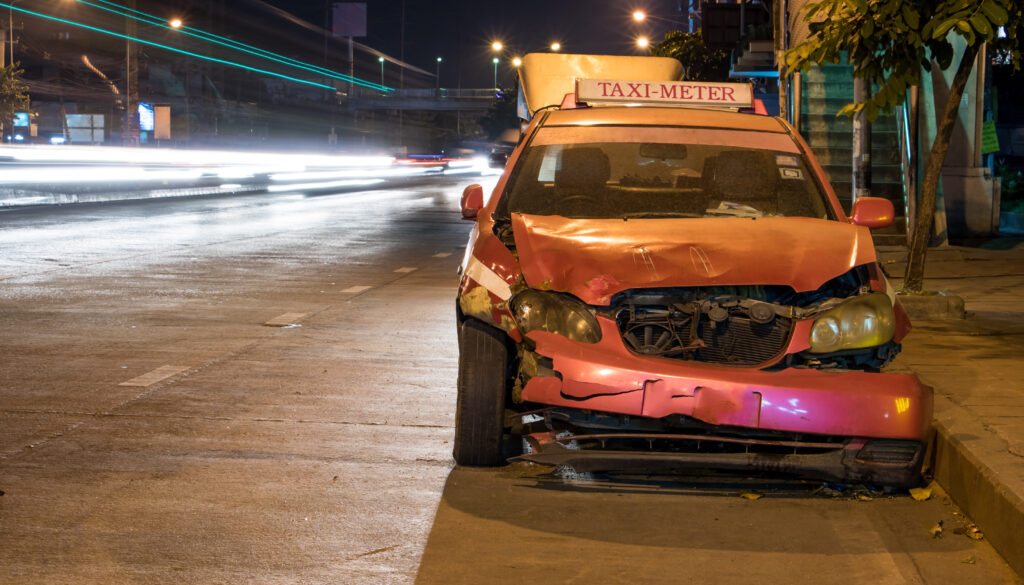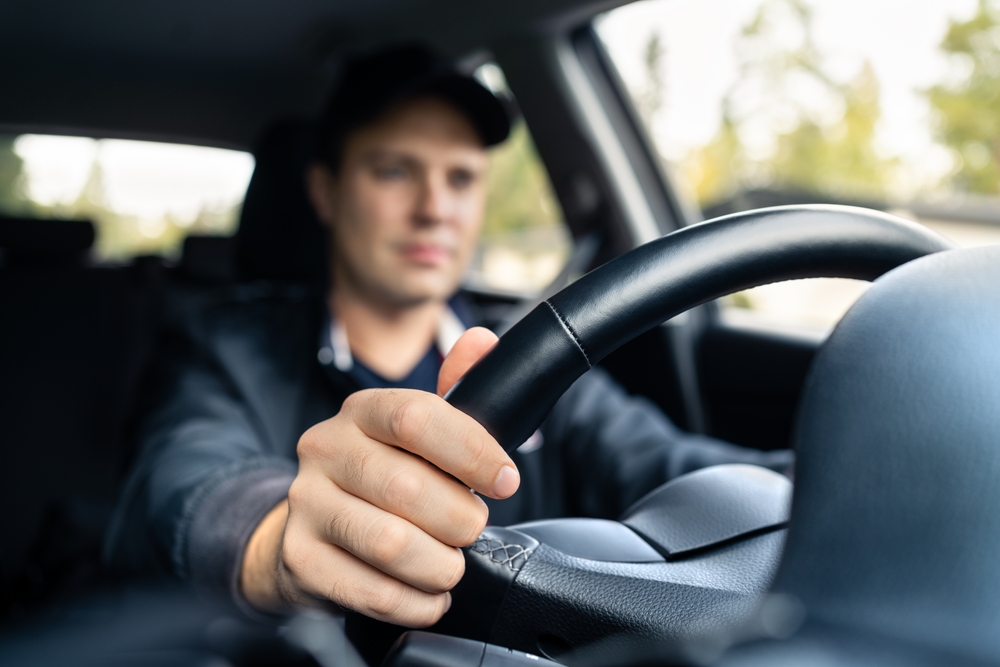The modern era of ridesharing platforms like Lyft has revolutionized how we move around our cities. However, with the convenience of these services come new problems, especially when accidents happen.

If you've suffered an injury in a Lyft-related accident, you might wonder about your legal rights. Can you sue Lyft? What are the challenges involved?
Below is some general information, but if you suffered injuries in a Lyft crash, seek immediate advice from a Sebastian car accident attorney.
Schedule A Consultation Today!
The Basics of Liability
When an accident occurs with a traditional taxi service, seeking compensation is relatively straightforward. Typically, you will seek damages from the taxi driver or the company. With ridesharing platforms like Lyft, the waters are murkier.
Lyft drivers are independent contractors, not employees. This distinction has been used by many ridesharing platforms' as a defense strategy against being directly liable for their drivers' actions. However, it doesn't mean you're without options.
Lyft's Insurance Policy
Lyft, aware of the potential risks, has a strong insurance policy.
Depending on the situation, this policy might come into play:
- When the Lyft app is off: If a Lyft driver is not logged into the app and gets into an accident, Lyft's insurance doesn't cover it. In such a scenario, the driver's personal auto insurance will be the primary source for potential compensation.
- When the app is on, but no ride accepted: If the driver has the app turned on but hasn't accepted a ride, Lyft provides liability coverage if the driver's personal insurance doesn't apply. This is typically up to $50,000 per injury, with a maximum of $100,000.
- When a ride is accepted or a passenger is in the car: From the moment a Lyft driver accepts a ride to when the passenger exits the vehicle, Lyft's $1 million liability insurance policy is in effect. This policy covers both property damage and personal injuries.
Steps to Take After Injuries in a Lyft Accident
Being in any accident can be disorienting and stressful. When it's with a Lyft vehicle, the situation might feel even more complicated due to the involvement of a major ridesharing platform. However, you can protect your health, rights, and potential compensation.
The first among these is seeking medical attention. The immediate aftermath of an accident can be chaotic, with a rush of emotions and a flurry of activity. While you may worry about the state of your vehicle or how the accident might affect your day, always make your health the top priority.
Even if you feel fine immediately after the accident, consult a medical professional. Some injuries, like internal bleeding or concussions, might not manifest instantly. They might present subtle symptoms initially that can escalate over time.
By seeking immediate medical attention, you're not just ensuring your safety but also getting a professional's evaluation of your physical state after the accident.
Additionally, medical records play a huge role in legal proceedings or insurance claims. These records offer a timestamped account of your injuries, linking them directly to the accident. Without such documentation, insurance companies or at-fault parties might argue that your injuries were pre-existing or unrelated to the accident.
Also, periodic follow-ups with medical professionals can track the progression or healing of your injuries. This can help in cases where injuries lead to chronic issues or require extended treatment. Such documentation paints a picture of the impact of the accident on your health, which can be beneficial in any legal proceedings.
Report to Lyft
If you find yourself in a situation where you've suffered an injury in a Lyft accident, one of the first steps to take, after tending to your immediate medical needs, is to report the incident to Lyft.
Notifying Lyft about the accident accomplishes a few essential objectives. First and foremost, it creates an official record of the event within the company's database. This formal documentation can be useful in any subsequent investigations or legal proceedings. Reporting is also a proactive step that can initiate insurance-related processes, potentially expediting claims or settlements.
Reporting an accident to Lyft is easier than you might think.
Here's a step-by-step breakdown:
- Opening the Lyft App: Begin by opening the Lyft app on your smartphone. Log into the account you used during the ride in question.
- Navigating to Ride History: Once in the app, head to the Ride History section. This area provides a detailed list of all your previous rides with Lyft.
- Select the Relevant Ride: Browse your ride history to locate the ride during which the accident occurred. Click on it to access more details.
- Use the Help Option: Within the ride details, there should be a "Help" or similar option. Clicking on this will lead you to a menu where you can report issues, including accidents.
- Provide Detailed Information: Once you select the option to report an accident, you'll likely have to provide specifics about the incident. Mention the date, time, location, any involved parties, and a brief description of what transpired.
- Submit the Report: After filling in all the required information, submit your report. Once done, Lyft will typically send a confirmation, either via the app or through email, acknowledging receipt of your report.
- Await Lyft's Response: Post-submission, Lyft's safety or support team should contact you. They may request additional information, offer guidance on the next steps, or provide details about how the company's insurance policy might come into play.
It's best to report the accident immediately. Delays might raise questions about the claim. Always keep a personal record of all communications with Lyft, including the initial report. Such documentation can be beneficial down the line, especially if discrepancies arise.
Can You Sue Lyft Directly?

Now, back to the main question – can you sue Lyft directly? It's complicated. While Lyft's terms of service have clauses that aim to limit their direct liability, these clauses aren't always set in stone. Depending on the circumstances of the accident, you might have grounds to sue Lyft directly. Some scenarios include:
Negligence in Vetting
Ridesharing platforms like Lyft have revolutionized our commute, offering unprecedented convenience and flexibility. However, with this innovation comes a responsibility on the part of such platforms to ensure the safety of their passengers.
One of the primary ways they do this is through a driver vetting process. But what happens when there's a mistake in this process, and it results in an accident? Such negligence can have far-reaching implications, not just for the injured party but also for Lyft as a company.
Lyft, like other ridesharing platforms, has a set protocol for onboarding drivers. This typically includes background checks, driving record reviews, and sometimes even face-to-face interviews. The objective is to make sure that every driver using the platform is competent, responsible, and doesn't pose a threat to passengers.
However, no system is entirely perfect. Mistakes can happen, and sometimes, drivers with questionable histories might slip through the cracks. For example, consider a scenario where a driver, previously charged with multiple DUIs or instances of reckless driving, is allowed to drive for Lyft. If this driver then causes an accident while on duty, there are several repercussions.
Firstly, the injured party or parties, whether they are passengers, pedestrians, or occupants of another vehicle, face the immediate physical and emotional toll of the accident. Their path to recovery might involve medical treatments, therapy, and time off work. The financial implications can be substantial.
The spotlight inevitably turns to Lyft's vetting process in such a scenario. Questions arise: How did such a driver get approved in the first place? Were there oversights in the background checks, or did certain red flags get dismissed? If there were lapses or negligence in the vetting process, there can be consequences for Lyft.
Legally, the principle of negligence comes into play. If a company, in this case, Lyft, fails in its duty to ensure the safety of its users, and this failure leads directly to harm, then the company can be held liable. This can mean compensating the injured party for medical bills, lost income, and even emotional distress.
Technical Failures
In today's age of technological advancements, we often take for granted the smooth operation of apps and platforms, expecting them to perform flawlessly at all times.
Ridesharing services like Lyft heavily rely on their applications not just for booking rides but for navigation, communication, and payment processes.
But what happens when there's a technical error? When these glitches directly contribute to accidents, they raise questions about Lyft's responsibility and potential legal repercussions.
The Lyft app connects passengers to drivers, provides drivers with routes, and calculates fares based on the distance and time traveled. Given its centrality to the service, the app must function correctly. However, technology doesn't always work that way. Software bugs, server downtimes, or GPS inaccuracies can happen.
Imagine a scenario where a driver, relying on the Lyft app's navigation, is directed down a one-way street in the wrong direction. Or perhaps the app freezes while a driver is in a high-traffic area, causing confusion and, subsequently, a collision. In such cases, it's not just the immediate accident that's concerning but the underlying cause: a technical failure in an app that millions trust for their daily commutes.
When technical glitches in the Lyft app lead directly to an accident, the injured parties may have grounds to pursue legal action against Lyft.
The core of the argument will be that the company provided a tool—the app—that malfunctioned under normal usage conditions, leading to the unfortunate event. The challenge, however, lies in directly linking the technical failure to the accident, as other factors might also come into play.
From a legal standpoint, the injured party will need to demonstrate that the technical glitch was the primary cause of the accident and that both the driver and passenger were using the app as intended.
If successful, they might be eligible for compensation covering medical expenses, loss of earnings, and other related damages.
Working With an Attorney

Given the challenges involved in these cases, collaborating with an attorney experienced in ridesharing litigation can benefit you.
Assessing the Strength of Your Case
Any legal battle requires careful evaluation of the facts at hand, especially when dealing with large corporations like Lyft.
The first important step following an accident with a Lyft vehicle is to determine whether there's a substantial case against the company or if other avenues, like pursuing the driver's insurance, are more feasible.
When you hire an attorney, they analyze every detail of your accident. They factor in the specifics of the incident, the available evidence, eyewitness testimonies, and any potential lapses in Lyft's operations or technical infrastructure.
By assessing the strength of your case, your attorney can provide guidance on the best course of action so that you don't waste time and resources on a lawsuit with slim chances of success.
Handling Insurance Claims
Ridesharing companies, including Lyft, have insurance policies that can cover damages in the event of an accident. However, the process of staking a claim can be difficult, often involving a maze of paperwork and negotiations.
If you decide to file a claim against Lyft's insurance, having a skilled attorney by your side is necessary. They understand insurance legalese and have the experience to negotiate assertively with insurance adjusters. The aim here isn't just to settle but to ensure that the settlement reflects the true extent of your damages, be it medical expenses, lost income, or emotional distress.
Without professional representation, there's a risk of accepting a settlement that undervalues your claim, potentially leaving you out of pocket for accident-related expenses.
Litigating if Necessary
Sometimes, negotiations don't lead to a satisfactory resolution, or the nature of the case might call for skipping negotiations and directly suing Lyft. In such situations, you'll have to go to court.
Litigation can be a complex, drawn-out process requiring extensive preparation, from gathering evidence to consulting expert witnesses. An attorney not only prepares your case for presentation in court.
With legal representation, you stand a better chance of receiving the compensation you rightfully deserve.

Consult a Car Accident Attorney Today
Being involved in an accident with a Lyft vehicle introduces more layers of complexity than the usual post-accident procedures. While it's possible to sue Lyft directly under specific circumstances, it's not always the best path.
Speaking with a car accident attorney can provide clarity, ensuring you take the steps most conducive to obtaining justice and compensation for your injuries.
